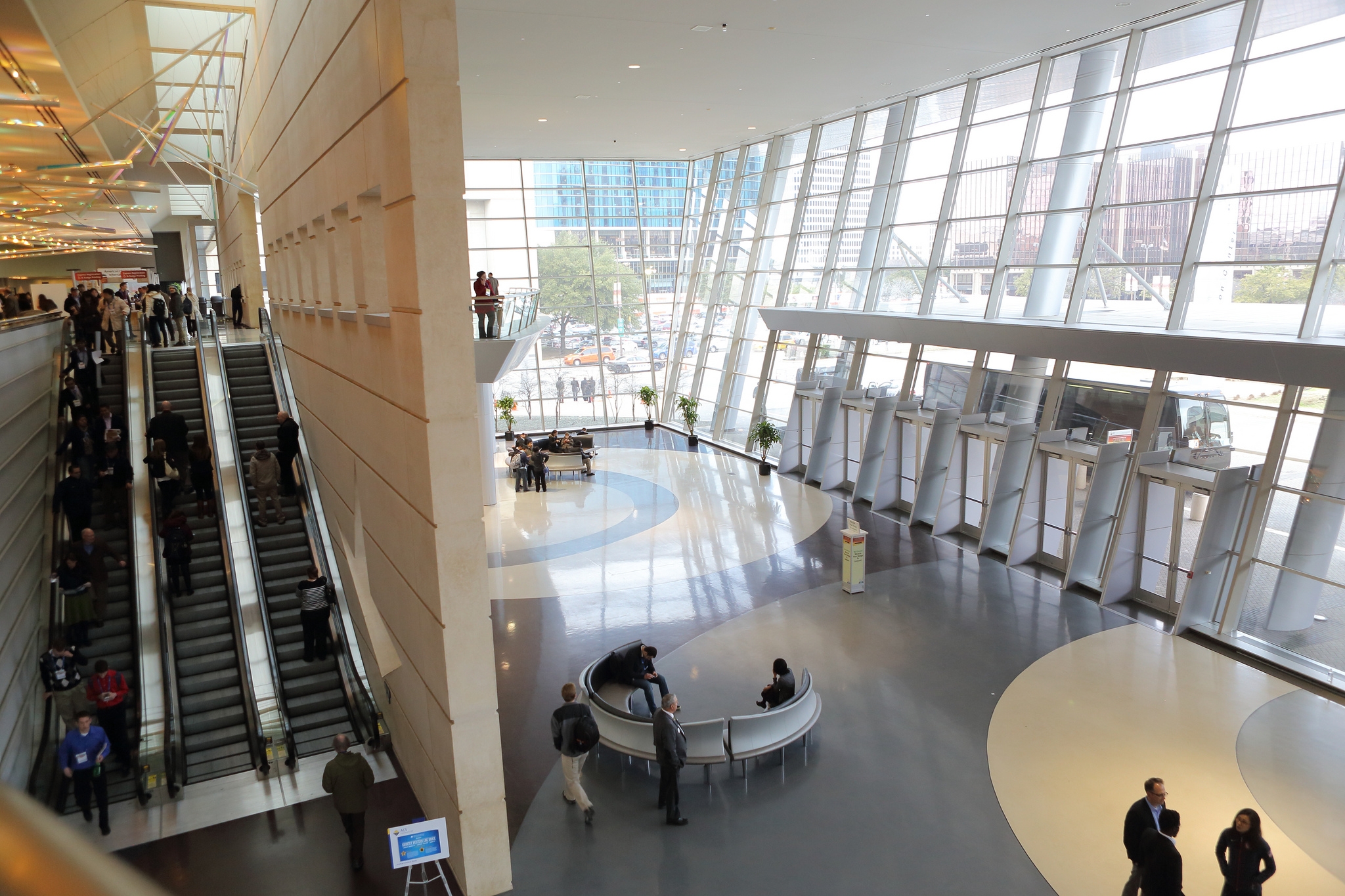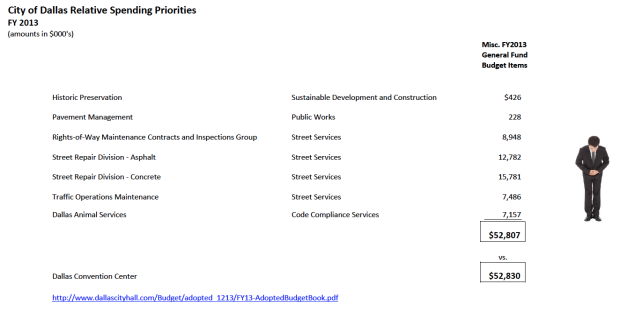Late last week, Philip Jones, president of the Dallas Convention and Visitors Bureau, tossed out his plan to seek up to $300 million to expand and fix up the convention center; you can read about it here ($200 million – $250 million version), or here (up to $300 million version). Better yet, watch an over-the-top enthusiastic narration of the plan by recent WFAA hire Monica Hernandez here (up to $250 million version). This, on the heels of an announcement earlier in the week that the city of Dallas was spending $27 million on a high-end restaurant complex and parking garage adjacent to the convention center complex.
Why do we need to spend roughly a quarter of a billion dollars on the convention center expansion/renovation, especially after City Manager A.C. Gonzalez just recently told Council Member Scott Griggs that adding just $3.8 million to the budget for libraries and animal services would “cause 27 city employees to lose their jobs and for 15 positions to remain vacant” and “would cause the city to lose 500 jobs and $30 million in new development”?
According to Jones, the reasons are numerous:
- “if we want to grow… we are not in the position to book a dozen large citywide groups unless we make the expansion.” (Dallas Business Journal)
- “it will help it compete against cities such as New Orleans, San Diego and Atlanta” (Dallas Business Journal)
- “the center can up its output to an estimated $494 million.” (Without further explanation, Candace Carlisle relays the alarming warning from the DCVB that without the money, “annual output will top out at $323 million for an expected loss of about $171 million,” when just two sentences prior, she stated “(f)rom 2010 to 2012, the convention center generated $351 million to $424 million in total output.”)
- “expanding the convention center is critical to keeping it competitive and luring bigger conventions to the city.” (WFAA)
- “if Dallas were to become a top travel and meeting destination, it could have an estimated economic impact of $6.6 billion! That’s right billion with a B!!!” (WFAA)
Hmm… this all sounded vaguely familiar, and Zac Crain’s subsequent Leading Off post seemed to confirm I wasn’t just imagining things. Indeed, I quickly stumbled upon this 2008 quote from Jones: “The City of Dallas desperately needs the convention center hotel if we want to retain our ranking as one of the top meeting and convention cities in the United States.” As I started digging into matters further, I stumbled onto another blog post revealing that Council Member Philip Kingston had been poking around this same ground back in February. So, how has the convention center performed since the Omni was built? And, what the heck is “output”? And how can it be that, in 2008, we were one of the top meeting and convention cities in the U.S., yet somehow, just six years later, after spending half a billion dollars on a luxury hotel and restaurant complex under construction, we no longer are a “top travel and meeting destination”?
Convention Center Financials Before/After the Omni
The following chart illustrates the financial performance of the convention center before (2010) and after (2013) the opening of the convention center hotel. (Sources: CAFR 2010 and CAFR 2013)
So, here are my observations:
- The convention center’s net operating loss remains essentially unchanged over the three year period, at -$37 million.
- The amount of “maintenance capital expenditures” increased from $1.9 million to $8.1 million.
- The annual taxpayer subsidy has remained relatively constant, declining from $53.9 million to $52.8 million.
- Total debt outstanding has declined slightly, from $347 million to $325 million.
- The only reason the convention center’s cash flow has improved is due to lower interest expense and reduced debt amortization, something completely unrelated to the underlying performance of the convention center itself.
- Cash balances have declined by roughly $39 million.
In other words, to the extent the city’s $500 million investment in the convention center hotel was supposed to improve the financial performance of the convention center itself, that does not yet appear to be the case.
To lend some perspective as to the magnitude of the city’s subsidy of the convention center, I’ve pulled a random comparison from the City’s FY2013 budget book. As illustrated, the size of the city’s annual contribution to the convention center is equal to the entire budget devoted to Dallas Animal Services, street maintenance, and historic preservation combined.
In last week’s news reports, the concept of “total output” was mentioned as justification for spending the $300 million, but I still am at a loss as to what that means and/or how it is calculated. Additionally, if we are to measure some concept of “output” associated with the convention center, couldn’t such a tool be applied to determine whether to increase investments in delivery of core services to residents — areas such as parks, streets, code compliance, etc.?
In an upcoming post, I will review the financial performance of the Omni Hotel.








